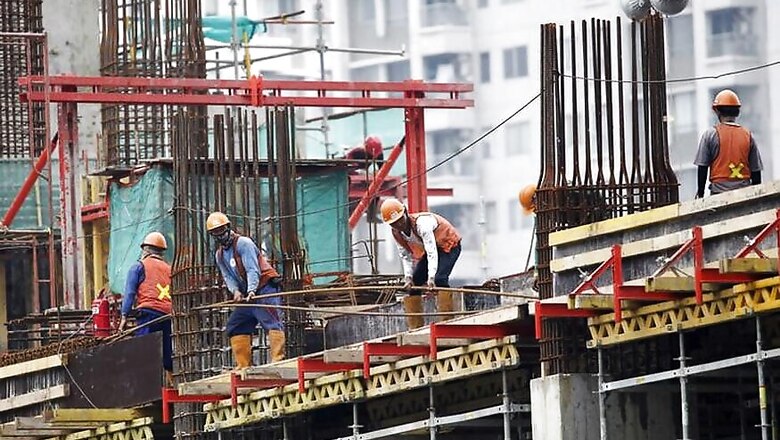
views
New Delhi: Indian economy is expected to decelerate to 6.5% in 2017-18 from 7.1% in the previous year, mainly because of hurried implementation of macro policies like Goods and Services Tax (GST) and demonetisation.
Data released by the Central Statistics Office (CSO) showed that the agriculture sector is expected to grow at 2.1% in FY18, slower than 4.9% in the previous year, while manufacturing is likely to grow at 4.6%, compared to 7.9% a year ago. Power and hotels are the only two sectors that will grow at faster rates of 7.5% and 8.7%.
As GST collections slipped to Rs 80,808 crore in November, down from an average of Rs 90,000 crore in the previous months, and with government planning to borrow an additional Rs 50,000 crore via gilts, which is double the amount that was estimated by the market, the GDP growth for FY18 may range between 6% and 6.5%.
In the second quarter (July-September), economy grew at 6.3% from a three-year low of 5.7% in the previous quarter. However, revision of GST rates on as many as 178 products in November led to the fall in government revenue. The fiscal deficit at the end of November breached the target and touched 112% of the budget estimate for 2017-18, mainly due to lower GST collections and higher expenditure.
Commenting on the forecast, Dr. Rajiv Kumar, vice-chairman, NITI Aayog said, “GDP growth in the second half of 2017-18 has risen to 7% bringing the annual growth rate to 6.5%.” He pointed out that economic activity has been picking up over the last three quarters and can be expected to strengthen in the coming period. “Hence the GDP growth will become more robust in 2018-19,” he added.
The practice of releasing advance GDP growth data began last year when the government shifted the Union Budget presentation to February 1 from the end of the February.
The nominal GDP will be used as the benchmark for most indices in the 2018-19 budget to be presented by Finance Minister Arun Jaitley on February 1. In Union Budget 2017, the finance ministry had assumed nominal GDP of Rs 168.5 trillion at 11.75% growth rate. In a fiscally tight year, a lesser nominal GDP will make it that more difficult for the government to achieve the fiscal deficit target of 3.2% of GDP in 2017-18.
Recovery in GDP growth is expected on the back of improved industrial performance in November and December. In the first seven months of the financial year, Index of Industrial Production (IIP) growth averaged 2.5%, a tad lower than the average of 2.6% in the first six months (April-September).
The central government’s public expenditure, which used to be the driver of economic growth in the previous quarters, slowed down to 6% in the September quarter. Experts prior to the release of the numbers had cited GST and demonetisation as reasons for the slowdown.




















Comments
0 comment